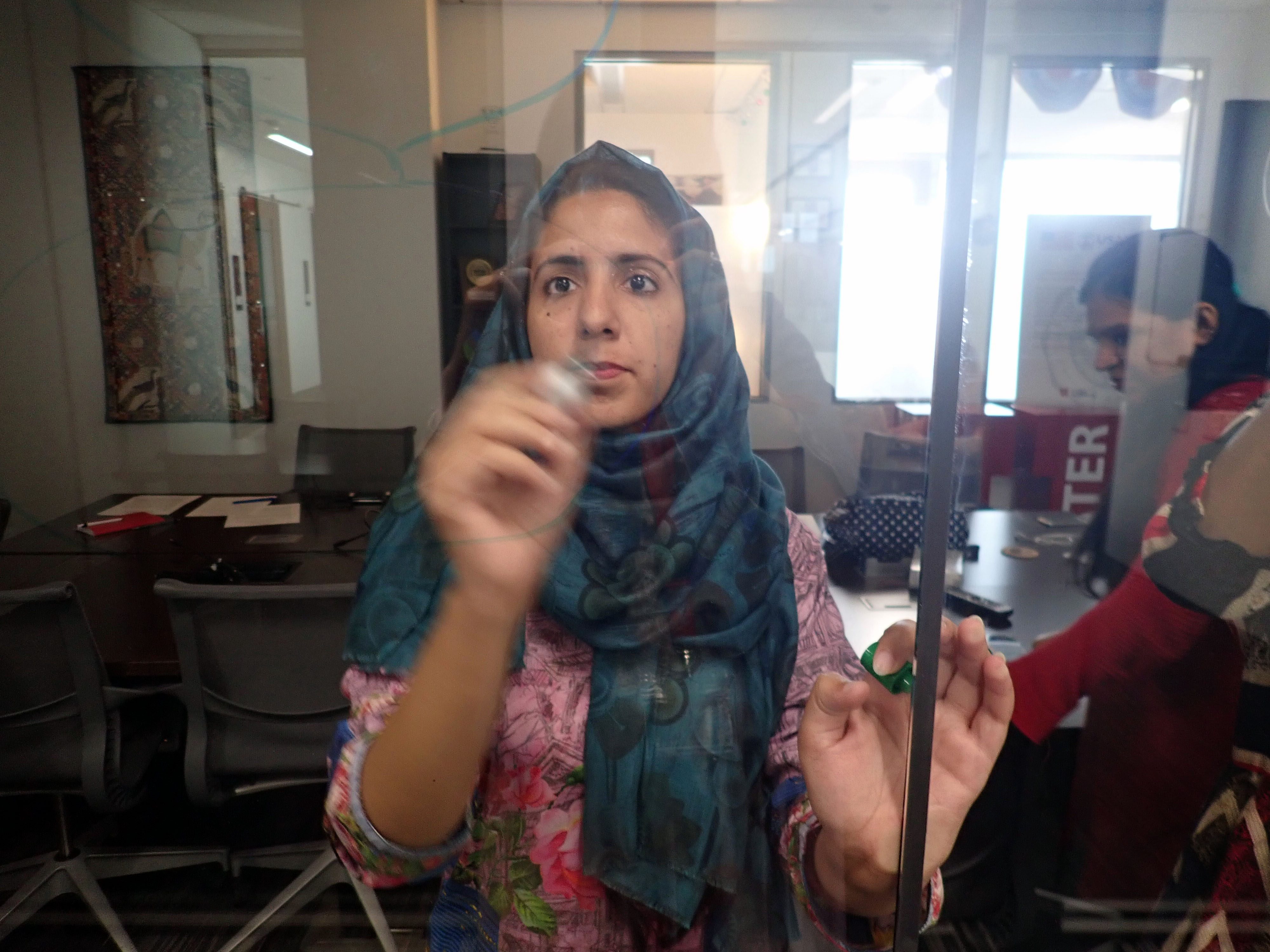
originally posted in @theu on July 16, 2018
By Cecily Sakrison, communications specialist, The Water Center at the University of Utah
“More confidence and better communication skills” are two things Sorth Ansari will take home with her when she heads back to Pakistan at the end of this semester. Ansari is one of six visiting scholars studying with the U Water Center. Back home, she and her peers are engineering graduate students at Mehran University of Engineering and Technology—the U’s partner institution for the USAID-backed U.S.-Pakistan Centers for Advanced Studies in Water. But for a transformative eight weeks here in Utah, they’re expanding their scope and becoming entrepreneurs—immersed in the purpose of bringing applied innovation to the world’s water crisis.
The need for their skills could not be greater. Pakistan is a laboratory for many of the world’s most daunting water challenges. Not unlike the arid Western U.S., it is a region wrestling with a burgeoning population in the face of shifting resources. There are issues of both floods and scarcity, lack of infrastructure, and incredible sanitation and hygiene hurdles. Many estimates point to Pakistan running out of water by 2025 and the country ranks high on the risk indexes of areas projected to be most impacted by climate change.
These students know the stakes are high. “But we have to be optimistic. We have nowhere to go but up,” said Aizaz Ali Qureshi during a workshop on leadership qualities.
The USPCASW Student Exchange Program launched in 2015 and, to date, has brought 83 scholars to study for a semester at the U. Students are paired with a mentor in their field to advance their graduate research through access to instrumentation, best-practice protocols and insight into Utah’s water-management systems. They also participate in a cultural diplomat program and receive extensive writing training. This summer marks the first exchange with an additional focus on entrepreneurship.
“The concept evolved from our initial programming for faculty,” said Steve Burian, program director and professor of civil engineering. “We wanted to develop a program that could also inspire and engage students in the pursuit of entrepreneurial solutions to water problems.” The U’s reputation as a nationally ranked hub for student entrepreneurship and innovation makes it a natural fit for such an endeavor and the Lassonde Entrepreneur Institute has partnered with USPCASW to offer additional expertise in the art and science of bringing ideas to fruition.
“The training provides a significant impact on these students. They will get knowledge and exposure in both business and technology development–something that students usually do not receive in a parallel manner,” said Darrin Young, professor of electrical and computer engineering and USPCASW mentor.
The students’ projects range from wastewater treatment solutions for the textile industry to feminine hygiene products to risk assessment protocols for the insurance sector. In August they will showcase their work in a competitive pitch event.
“This is about more than teaching the concepts and tools to develop business plans. The program inspires students to be broadly entrepreneurial in developing solutions to complex water challenges,” said Burian.
Why is an entrepreneurial mindset so critical to water issues? Before the Exchange, Shoaib Jamro wasn’t certain where next to apply his studies. “Now I can clearly see 10, 20, 30 ways I could go with my research,” said Shoaib Jamro. “Through this program, I’ve started to see the opportunities rather than the problems.”
Watershed Stories is a series exploring water work across the University of Utah campus. The stories are curated by the U Water Center, the Sustainability Office and the Global Change & Sustainability Center.
